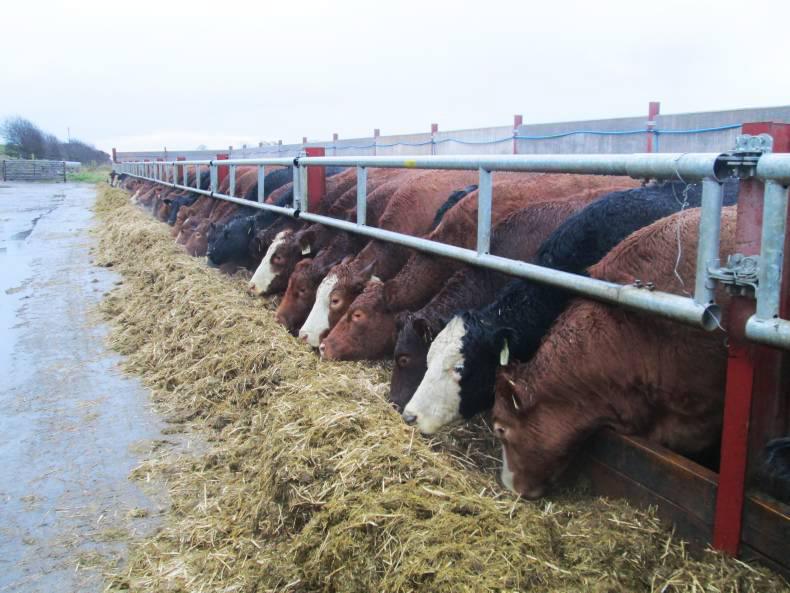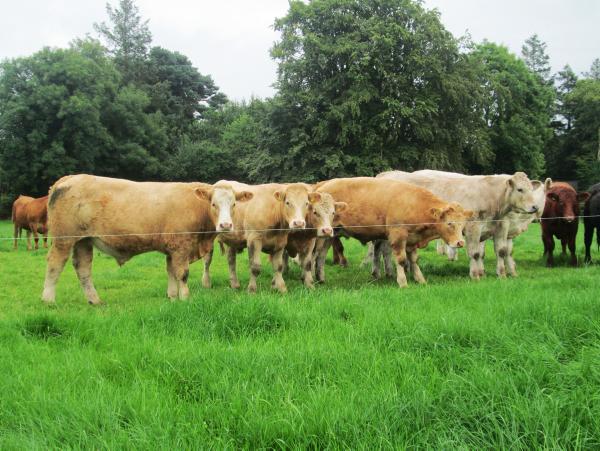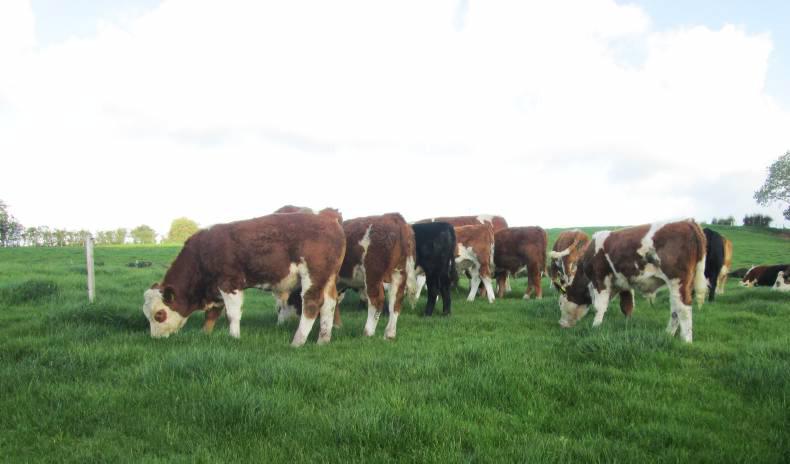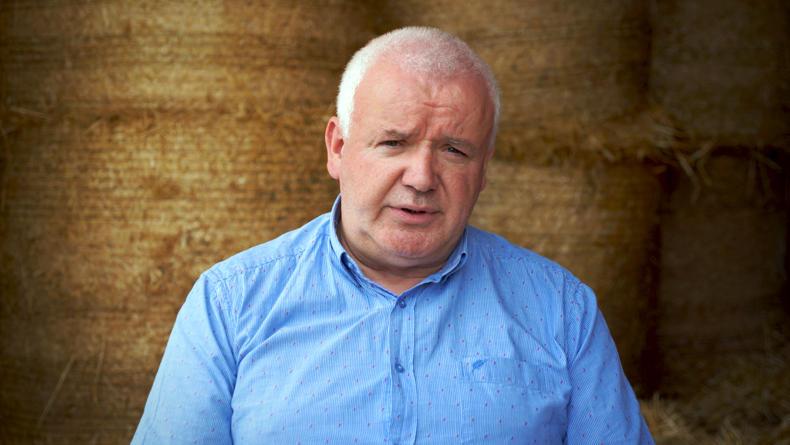The majority of programme farms are now beginning to offer pre-calving minerals and vitamins to their spring herds this month.
While some programme farms don’t feed any and don’t seem to suffer negative consequences, most see it as an insurance policy, helping to reduce problems around calving. The general advice is that it is good practice.
A survey of programme farms last year showed little consistency in the make-up or price of minerals being used. Prices being quoted ranged from £350 to over £1,000/t.
At the higher prices, when fed at a rate of 120 grammes per day (which is the normal recommendation) and for an eight- to 10-week period, the costs over an 80-cow herd soon add up.
Therefore, it is important if minerals and vitamins are being fed that they are at least supplying what your cows require.
Some of the ingredients should be standard to all farms. For example, magnesium should always be included to supply 20g to 25g per head per day.
On the other hand, calcium should not be included, as feeding calcium in the run-up to calving can leave cows more predisposed to milk fever, sub-clinical milk fever, lazy calvings and more retained cleanings.
Some farms may be deficient in specific trace elements, such as selenium or iodine, which may need particular attention.
However, the mix detailed in Table 1 is a good guide
to follow if a standard pre-calving mineral and vitamin mix is required.

Week in review
Animal health plans are being reviewed for the coming year.Scanning of autumn-calving cows now taking place.Annual benchmarking is now complete on all farms.Pre-calving minerals being fed to spring-calving cows.James Taylor, Portrush
I am now starting preparations for calving, which is due to begin from the second week in March. Pre-calving minerals will be fed from next week onwards at a daily rate of 120g/head and silage quantities being offered are now increasing. Last week, all cows and replacements were treated with Zanil to clear out any remaining liver and rumen fluke.
There are 83 cows and 31 replacement heifers due to calve in 2016, which is an increase of 26 from this time last year. To cope with the increased numbers, some extra calving pens, which can also be used for stock bulls at other times of the year, are being installed.
Condition
The majority of the herd is now predominantly from Stabiliser breeding. These cows have a natural tendency to gain condition during the summer. This resulted in most being housed in a body condition score of 3.5 to 4.0 during the month of November.
Target condition score at calving is 2.5 to 2.75 to ensure any difficulties are kept to a minimum. This means that most cows could afford to lose a full body condition score between housing and calving.
To date, the cows have been managed in three groups. The main group weighed just over 680kg at housing and has been fed since then to lose a full body condition score, which we estimate to be approximately 70kg.
Second-cut silage (D value of 68) has been restricted to these cows, beginning eight weeks ago at 15kg/head/day and gradually stepped up to 16.5kg which they are now receiving, along with 1kg of straw.
A three-day mix is fed, which is usually cleaned up by the end of day two.
Given that cows are kept in an unroofed area, if weather was particularly poor some straw has occasionally been offered on day three.
Offering a three-day mix all at once means that all cows don’t necessarily need to be able to feed at the same time. This has worked well and the main group of cows is now in an ideal condition score.
Starting next week, silage offered to this group will be increased to 33kg/day and gradually stepped up to 40.5kg at the point of calving.
Based on our silage analysis, this should provide sufficient energy and protein requirements for maintenance, calf growth and colostrum production in the run-up to calving.
The remaining two cow groups are:
A batch of 12 cows which have poorer locomotion or had foot paring carried out in the autumn. These are grazing a dry rented hill and are being offered silage daily. These will be housed next week.A batch of cows which calved down for the first time in 2015. They have been offered 5kg more than the main group daily. These animals are still growing and need slightly better nutrition as a result.Savings
Valuing silage at £20/t, the savings in being able to restrict feeding over the past eight weeks alone have been worth almost £30/cow. If offered silage ad lib, they would be consuming over 40kg daily.
Finishing cattle
Most of our 2014 Aberdeen Angus- and Stabiliser-bred steers have been slaughtered over the past month (the strongest of the group were slaughtered as bulls last May).
These steers were housed on 24 September at 516kg and after 49 days feeding, averaged 600kg (1.73kg/day) on 12 November. At the last weighing on 8 December, they averaged 645kg.
There are currently 16 of the 2015-born male calves being fed as bulls. Their average birth date is 22 March. They have performed well since housing in October.
Their average daily weight gain was 1.78kg up to the last weighing on 8 December, when they averaged 432kg. They are currently being offered 4kg/day of a 16% CP blend along with a total mixed ration designed for growing cattle.
However, this group started off as a batch of 21. At weaning, I castrated three that I wasn’t confident would achieve sufficient performance as bulls.
A further two had to be removed after housing due to injuries. They will probably also be castrated.
I am not prepared to feed cattle as bulls that don’t have the potential to perform. Cattle being finished as bull beef must have the genetic potential to respond to feeding.
That means achieving gains of at least 1.6kg/day during the growing and finishing feeding phases.
Read more
All Northern Ireland suckler beef programme reports
The majority of programme farms are now beginning to offer pre-calving minerals and vitamins to their spring herds this month.
While some programme farms don’t feed any and don’t seem to suffer negative consequences, most see it as an insurance policy, helping to reduce problems around calving. The general advice is that it is good practice.
A survey of programme farms last year showed little consistency in the make-up or price of minerals being used. Prices being quoted ranged from £350 to over £1,000/t.
At the higher prices, when fed at a rate of 120 grammes per day (which is the normal recommendation) and for an eight- to 10-week period, the costs over an 80-cow herd soon add up.
Therefore, it is important if minerals and vitamins are being fed that they are at least supplying what your cows require.
Some of the ingredients should be standard to all farms. For example, magnesium should always be included to supply 20g to 25g per head per day.
On the other hand, calcium should not be included, as feeding calcium in the run-up to calving can leave cows more predisposed to milk fever, sub-clinical milk fever, lazy calvings and more retained cleanings.
Some farms may be deficient in specific trace elements, such as selenium or iodine, which may need particular attention.
However, the mix detailed in Table 1 is a good guide
to follow if a standard pre-calving mineral and vitamin mix is required.

Week in review
Animal health plans are being reviewed for the coming year.Scanning of autumn-calving cows now taking place.Annual benchmarking is now complete on all farms.Pre-calving minerals being fed to spring-calving cows.James Taylor, Portrush
I am now starting preparations for calving, which is due to begin from the second week in March. Pre-calving minerals will be fed from next week onwards at a daily rate of 120g/head and silage quantities being offered are now increasing. Last week, all cows and replacements were treated with Zanil to clear out any remaining liver and rumen fluke.
There are 83 cows and 31 replacement heifers due to calve in 2016, which is an increase of 26 from this time last year. To cope with the increased numbers, some extra calving pens, which can also be used for stock bulls at other times of the year, are being installed.
Condition
The majority of the herd is now predominantly from Stabiliser breeding. These cows have a natural tendency to gain condition during the summer. This resulted in most being housed in a body condition score of 3.5 to 4.0 during the month of November.
Target condition score at calving is 2.5 to 2.75 to ensure any difficulties are kept to a minimum. This means that most cows could afford to lose a full body condition score between housing and calving.
To date, the cows have been managed in three groups. The main group weighed just over 680kg at housing and has been fed since then to lose a full body condition score, which we estimate to be approximately 70kg.
Second-cut silage (D value of 68) has been restricted to these cows, beginning eight weeks ago at 15kg/head/day and gradually stepped up to 16.5kg which they are now receiving, along with 1kg of straw.
A three-day mix is fed, which is usually cleaned up by the end of day two.
Given that cows are kept in an unroofed area, if weather was particularly poor some straw has occasionally been offered on day three.
Offering a three-day mix all at once means that all cows don’t necessarily need to be able to feed at the same time. This has worked well and the main group of cows is now in an ideal condition score.
Starting next week, silage offered to this group will be increased to 33kg/day and gradually stepped up to 40.5kg at the point of calving.
Based on our silage analysis, this should provide sufficient energy and protein requirements for maintenance, calf growth and colostrum production in the run-up to calving.
The remaining two cow groups are:
A batch of 12 cows which have poorer locomotion or had foot paring carried out in the autumn. These are grazing a dry rented hill and are being offered silage daily. These will be housed next week.A batch of cows which calved down for the first time in 2015. They have been offered 5kg more than the main group daily. These animals are still growing and need slightly better nutrition as a result.Savings
Valuing silage at £20/t, the savings in being able to restrict feeding over the past eight weeks alone have been worth almost £30/cow. If offered silage ad lib, they would be consuming over 40kg daily.
Finishing cattle
Most of our 2014 Aberdeen Angus- and Stabiliser-bred steers have been slaughtered over the past month (the strongest of the group were slaughtered as bulls last May).
These steers were housed on 24 September at 516kg and after 49 days feeding, averaged 600kg (1.73kg/day) on 12 November. At the last weighing on 8 December, they averaged 645kg.
There are currently 16 of the 2015-born male calves being fed as bulls. Their average birth date is 22 March. They have performed well since housing in October.
Their average daily weight gain was 1.78kg up to the last weighing on 8 December, when they averaged 432kg. They are currently being offered 4kg/day of a 16% CP blend along with a total mixed ration designed for growing cattle.
However, this group started off as a batch of 21. At weaning, I castrated three that I wasn’t confident would achieve sufficient performance as bulls.
A further two had to be removed after housing due to injuries. They will probably also be castrated.
I am not prepared to feed cattle as bulls that don’t have the potential to perform. Cattle being finished as bull beef must have the genetic potential to respond to feeding.
That means achieving gains of at least 1.6kg/day during the growing and finishing feeding phases.
Read more
All Northern Ireland suckler beef programme reports












SHARING OPTIONS